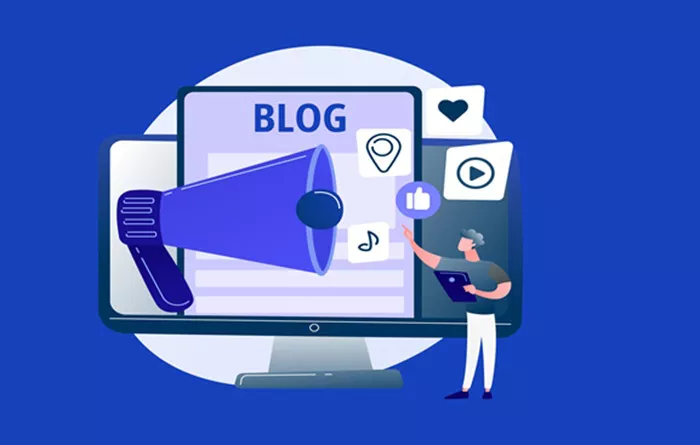Creating a high-quality blog is just the first step in reaching your audience. Without proper promotion, even the most informative and engaging content may go unnoticed. Social media is one of the most effective ways to promote a blog, helping to expand reach, drive traffic, and build a loyal readership. How to Promote a Blog on Social Media? This article explores detailed strategies for promoting a blog on social media, ensuring maximum engagement and visibility.
Understanding Your Target Audience
Before promoting a blog on social media, understanding the target audience is crucial. Consider factors such as demographics, interests, and online behavior. Identifying the right audience helps in selecting the most effective platforms and crafting content that resonates.
Conduct Market Research: Use analytics tools, surveys, and social media insights to gather information about the audience.
Create Audience Personas: Develop detailed personas based on factors like age, profession, interests, and social media preferences.
Analyze Competitors: Study how similar blogs engage their audiences on social media and learn from their successful strategies.
Choosing the Right Social Media Platforms
Different social media platforms cater to different types of audiences and content styles. Selecting the right platform can significantly impact a blog’s promotional success.
Facebook: Best for sharing blog links, engaging in community discussions, and leveraging paid advertising.
Twitter: Ideal for sharing short updates, interacting with followers, and participating in trending discussions.
Instagram: Great for visual storytelling, behind-the-scenes content, and engaging with a younger audience.
LinkedIn: Suitable for professional or industry-related blogs aiming to reach business professionals.
Pinterest: Works well for lifestyle, DIY, fashion, and food blogs with strong visual appeal.
TikTok: Useful for creative, short video promotions, tutorials, and audience engagement.
Optimizing Social Media Profiles
A well-optimized social media profile establishes credibility and attracts followers who may be interested in the blog.
Consistent Branding: Use the same profile picture, color scheme, and tone across platforms.
Compelling Bio: Write a clear and concise bio that includes keywords related to the blog’s niche.
Website Link: Add the blog link to the profile to drive direct traffic.
Pinned Posts: Highlight key blog posts or introductions at the top of profiles.
Crafting Shareable Content
Social media content should be engaging and easy to share. High-quality, visually appealing posts perform better than plain text updates.
Create Eye-Catching Graphics: Use tools like Canva or Adobe Spark to design attractive visuals for blog promotion.
Use Engaging Captions: Write short, compelling captions that encourage interaction and curiosity.
Leverage Hashtags: Research and use trending or relevant hashtags to increase visibility.
Include Call-to-Actions (CTAs): Encourage readers to like, share, comment, or visit the blog.
Leveraging Video Content
Videos attract higher engagement rates on most social media platforms. Bloggers can use video content to complement their written posts.
Create Teasers: Short teaser videos can introduce blog topics and encourage readers to click through.
Host Live Sessions: Live Q&A sessions, interviews, or discussions around blog topics engage followers.
Utilize Stories and Reels: Instagram and Facebook Stories, as well as TikTok Reels, help maintain an active presence.
Engaging with the Community
Social media is a two-way communication platform. Engaging with followers helps in building relationships and increasing blog traffic.
Respond to Comments and Messages: Actively reply to comments and messages to encourage further discussions.
Join and Participate in Groups: Facebook and LinkedIn groups are great places to share blog posts and engage in meaningful discussions.
Collaborate with Influencers: Partnering with influencers or industry experts can help in reaching a wider audience.
Host Giveaways and Contests: Encourage participation by offering small rewards for likes, shares, and comments.
Utilizing Paid Promotions
While organic reach is important, paid social media promotions can significantly boost blog visibility.
Boost Posts: Facebook, Instagram, and Twitter allow bloggers to promote posts to reach a larger audience.
Use Targeted Ads: Platforms like Facebook and LinkedIn provide advanced targeting options based on interests, demographics, and behavior.
Retarget Visitors: Use retargeting ads to bring back users who visited the blog but didn’t engage.
Scheduling and Automating Posts
Consistency is key in social media marketing. Automating and scheduling posts saves time and maintains an active presence.
Use Social Media Management Tools: Tools like Buffer, Hootsuite, and Later help in scheduling posts in advance.
Post at Optimal Times: Analyze insights to determine the best posting times for maximum engagement.
Maintain a Content Calendar: Plan and organize content ahead of time to ensure regular updates.
Analyzing Performance and Adjusting Strategies
Regularly measuring the effectiveness of social media promotion helps in refining strategies for better results.
Track Engagement Metrics: Monitor likes, shares, comments, and click-through rates to assess content performance.
Use Analytics Tools: Platforms like Google Analytics, Facebook Insights, and Twitter Analytics provide valuable insights.
Experiment with Different Formats: Try different content types, posting schedules, and strategies to identify what works best.
Optimize Underperforming Posts: Revise and repurpose posts that did not perform well to increase engagement.
Conclusion
Promoting a blog on social media requires a strategic approach, combining organic engagement, visual appeal, and occasional paid promotions. By understanding the target audience, optimizing social media profiles, creating shareable content, engaging with the community, and consistently analyzing performance, bloggers can maximize their reach and grow their readership. Implementing these strategies effectively ensures that a blog gains visibility, engagement, and long-term success.
Related Topics
- How to Create a Blog Title?
- How to Create a Profitable Guest Blog Strategy?
- How To Create A Blog Post In Divi?

